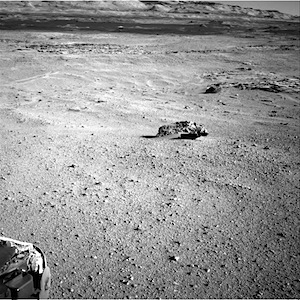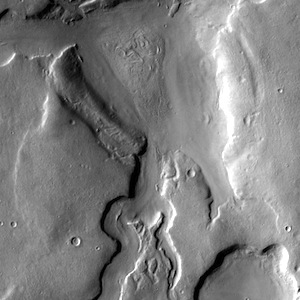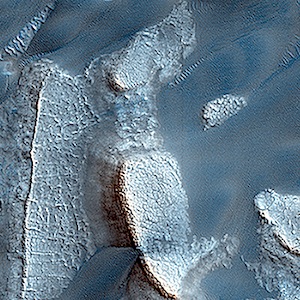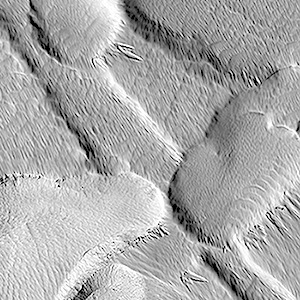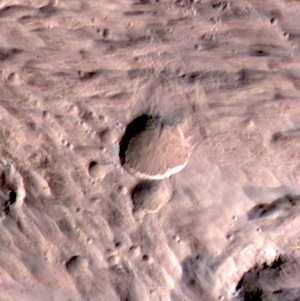NASA’s Mars 2020 rover has no formal name yet, but already 27 places on Mars are contending to be its landing site. NASA has a lot riding on the site selection because this rover, unlike the currently operating Curiosity and Opportunity, will collect and store some 30+ small cylindrical samples of rock and soil for eventual return to Earth.

Planning for NASA’s 2020 Mars rover envisions a basic structure that capitalizes on the design and engineering work done for Curiosity, but with new science instruments for accomplishing different science goals. (NASA/JPL-Caltech)
Launch for the new rover is set for July-August 2020, with arrival on Mars in February 2021. The rover’s baseline mission will last one Martian year, or 1.9 Earth years. In general, the new rover will use the same chassis as Curiosity, but with modifications to handle the samples. The instruments are to be selected by mid-summer 2014, and will probably be a simpler set than that carried by Curiosity.
As with previous lander missions, NASA is using a series of workshops where scientists can make the case for a particular spot to go to. The first such was held May 14-16 in Arlington, Virginia, where more than 100 Mars scientists gathered to propose, critique, and vote on some 27 potential sites.
The engineering criteria for what makes a site feasible are here, the mission’s geological criteria and goals are here, and the site proposals are here.
Among the sites brought forward at the workshop were the finalists from Curiosity’s selection round (Holden, Eberswalde delta, and Mawrth Vallis) as well as three sites that have been visited already: Gusev Crater (where Spirit landed), Meridiani Planum (where Opportunity is at work now), and Gale Crater (where Curiosity is at present).
But at least in this initial round of voting, old sites and visited ones ranked lower than new sites. Interestingly, the top four (Northeast Syrtis, Nilli Fossae trough, Nilli Fossae carbonates, and Jezero Crater) all lie in the same general area of Mars. This is where northeastern Syrtis Major meets the hill-and-trough terrain on the northwest side of the Isidis impact basin. Phyllosilicate (clay) minerals figure large in these four sites (and in most of the others as well), along with a diversity of additional rocks and minerals.
But this ranking won’t be the last word. The choice of Gale Crater for Curiosity came only after more than 65 sites had been examined during five workshops held from 2006 to 2011. The next Mars 2020 site workshop will be in summer 2015, and the final site may not be selected until 2019. Meanwhile, scientists are collecting more data and images on the sites proposed at this meeting. If the past is any guide, at least a few new candidates will emerge by mid-2015.
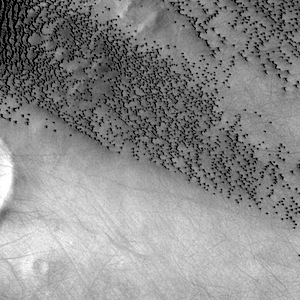 THEMIS Image of the Day, May 27, 2014. Today’s image shows another section of Siton Undae. There is a crater just off the image to the left (west). In the lee of this unnamed crater there are no dunes, but there are numerous dust devil tracks. Dunes surround the crater, except for the lee area. The winds, moving from west to east, are channeled into a chaotic regime by the crater rim, which has created the dune-free area and the dust devils.
THEMIS Image of the Day, May 27, 2014. Today’s image shows another section of Siton Undae. There is a crater just off the image to the left (west). In the lee of this unnamed crater there are no dunes, but there are numerous dust devil tracks. Dunes surround the crater, except for the lee area. The winds, moving from west to east, are channeled into a chaotic regime by the crater rim, which has created the dune-free area and the dust devils.










